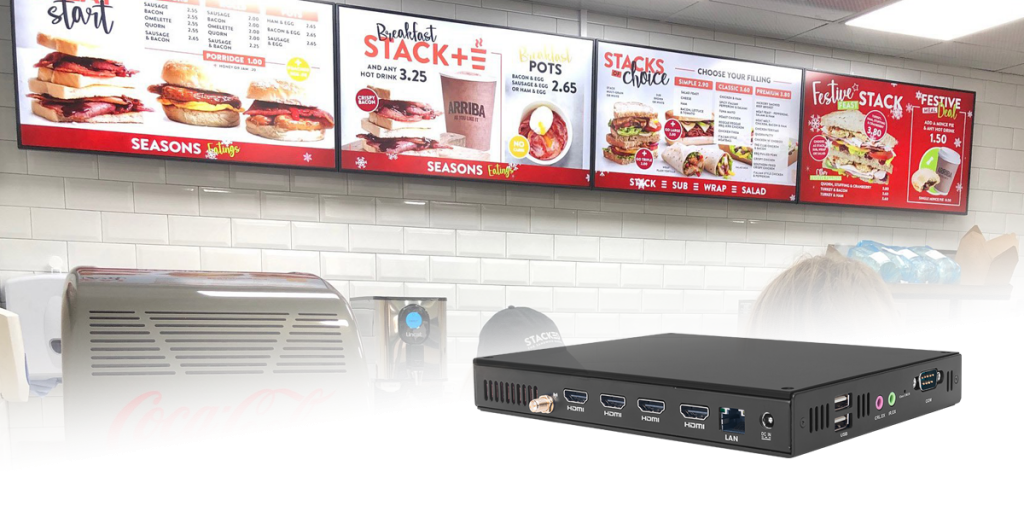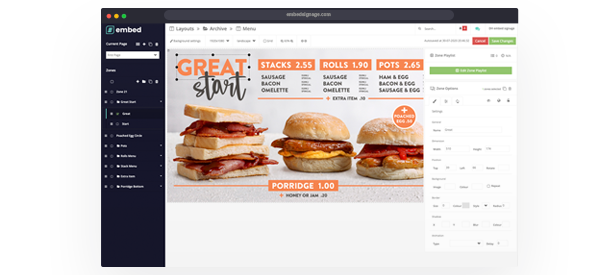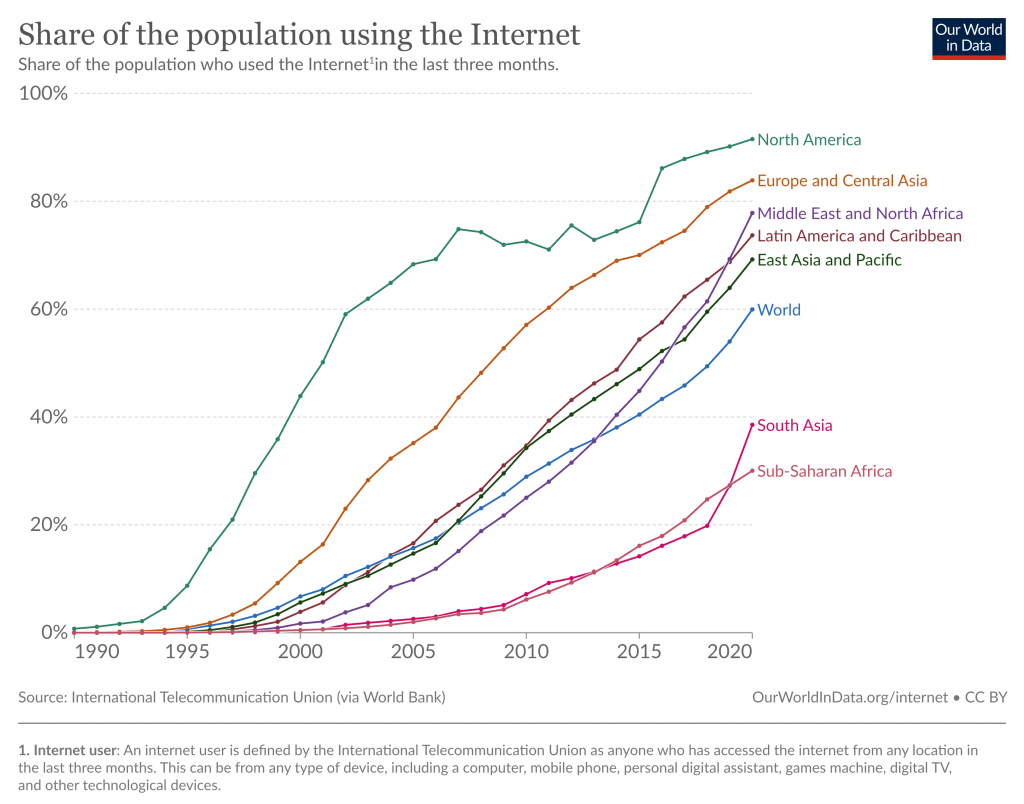Digital Signage System: The Ultimate Business Communication Tool

As technology continues to advance, businesses are always looking for new ways to engage with their customers and stay ahead of their competition. One innovative method that has become a staple in business communications over recent years is the digital signage system.
This is a system that allows businesses to display their marketing messages, promotions and other important information on digital displays such as LED walls, commercial LFD, interactive kiosks, video walls and more.
In this article, we will explore what a digital signage system is, the components required to create one, and why it is a must-have tool for businesses looking to communicate more effectively with their customers.
Components of Digital Signage System
To create a digital signage system, there are two core components required: hardware and software.
1. Hardware
The hardware components include commercial screens, LED walls, video walls, media players, and System on Chip (SoC) displays. These displays can be placed in strategic locations throughout a retail store, such as near the checkout counter or at the entrance, to grab the attention of customers and promote products or services.
Some commercial displays have built in media players known as SoC (System on Chip) and robust options are available from manufacturers such as Vestel, Samsung and LG. There are also displays, from manufacturers such as Sharp/NEC, that can have an OPS (Open Pluggable Standard) or SDM (System Display Module) player installed offering high end performance and scope for different Operating Systems like Windows or ChromeOS Flex.
2. Software
The software component is the heart of the system and is either on-premise or cloud based. With SaaS digital signage software, businesses manage the content on the screens through a web-based interface where they can easily create, schedule, and publish content such as images, videos, and text messages to their digital displays. This software can also provide data analytics to help businesses understand how effective their messaging is and make adjustments accordingly.
To recap, the two core components of a Digital Signage System are:
- Hardware components: displays, LED walls, video walls, media players, SoC
- Software components: SaaS digital signage software, cloud-based, central management of the system
Once you have the hardware and software for your digital signage system in place then it’s all going to boil down to content… There’s an old adage that ‘Content is King!’ and it really is true. Content is such a pivotal part of making a digital signage system work well, however this article isn’t going to dive into that side too much, we’ll focus on content in a separate article as it’s a subject that deserves more attention.
What types of digital signage systems are available?
Digital signage systems come as two main types, each serving a specific purpose. Here are some of the two most common types of digital signage systems available in the market today:
1. Standalone / On-Premise Digital Signage:
This type of digital signage system typically consists of a screen, media player and on-premise digital signage software hosted on a local server. It is suited to small scale networks and for operators that do not want or are unable to utilise cloud technology. This normally will endure higher CAPEX costs and rely on the business owner to maintain the system including the technical aspects of deployment, network management and operation.
2. Cloud Digital Signage System:
A cloud-based digital signage system, also known as Software as a Service (SaaS) digital signage software, is one that operates on the cloud, eliminating the need for on-premise servers and hardware. This means that businesses can manage and display their signage content remotely from anywhere, at any time, as long as they have an internet connection. With the world being more connected to the internet than ever before, the lower costs and frictionless setup, cloud software is a much more attractive proposition for many businesses.
Digital signage systems can be used to provide information about products and services, promote special offers or advertisements, display directions, provide valuable employee updates, show live news and weather updates, play video content, show business data and so much more. This makes it an efficient and cost-effective way to communicate with customers, employees and visitors and something that any business should seriously consider implementing.
Proven Benefits of a Digital Signage System
According to a study by Intel, digital signage systems can generate 400% more views than static signs. Additionally, a report by Grand View Research predicts that the global market for digital signage will reach $45.94 billion by 2030, with the retail industry being the largest end-user segment. These statistics demonstrate the significant impact that digital signage can have on businesses, particularly in the retail industry, and highlight why it truly is a must-have method of communication.
Let’s take a closer look at some of the key advantages of using a digital signage system.
1. Increased Engagement, Retention and Recall:
Digital signage systems are designed to grab the attention of the audience, keep them engaged and leave a last impression. With the ability to display dynamic and interactive content such as videos, real-time data and social media feeds, digital signage systems can create an immersive experience for the audience. This not only helps to increases viewer satisfaction and make messages more memorable to the viewer but can also lead to higher retention rates. A great example of this was seeing a rise in both sales and brand-love scores for Krispy Kreme UK & Ireland after deploying a digital signage system for their doughnut kiosks at supermarkets and partner sites.
2. Improved In-Store Sales:
One of the primary benefits of digital signage systems is their ability to drive sales. By displaying promotional messages, special offers, and product information, businesses can encourage customers to make a purchase they might not have otherwise made. There are now numerous case studies that demonstrate how digital signage has helped businesses increase sales from 5%, to 30%, to 50% and beyond.
3. Effective Promotion of Products and Services:
Digital signage systems are an effective way to promote products and services. With the ability to display targeted and relevant content, businesses can showcase their products and services in a compelling way. Businesses are not limited to one message for the space like you would be for printed messaging, a digital signage system offers the ability to have content rotate at specific intervals giving more time for multiple messages.
4. Cost-Effective and Time-Efficient Communication Tool:
Digital signage systems are a cost-effective and time-efficient way to communicate with customers. Unlike traditional advertising methods, such as print or television advertising, digital signage systems can be updated in real-time and comparably at a fraction of the cost. Not only that, but they can help unleash resource that was previously strapped into manual updating of print or posters. A great example of this is Danone UK & Ireland who saw a saving of at least of two hours per week in operational efficiencies through deploying a digital signage system.
5. Increased time at location and increase in Average Order Value (AOV):
SaaS digital signage software offers businesses the flexibility to create custom layouts including interactive content and use a wide range of media formats including images, videos, custom fonts, YouTube, Power BI and much more to engage their audience. In a study carried out into the effects of digital signage on customers, not only was the impact of screens vs no-screens tracked but also the effect of the type of content displayed. What they found was fascinating… larger stores with digital signage systems implemented saw an increase in the time customers spent in the store by 10% as well as an increase of 17% in order values.
Further to this, by adding pricing information to the content shown on screen, it boosted order values, quantities of products sold and time spent in store even further.
Recap on some of the proven benefits of using a digital signage system:
- Increased customer engagement, retention and recall
- Improved in-store sales
- Effective promotion of products and services
- Cost-effective and time-efficient communication tool
- Increased time at location and increase in average order values
Advantages of using SaaS Digital Signage Software
SaaS digital signage software has revolutionised the way businesses create, manage and distribute content for their digital displays. It provide a near frictionless workflow of taking a message and getting in front of the audience. Here are some of the key advantages of using SaaS digital signage software at the core of a digital signage system:
1. Easy content management and distribution:
SaaS digital signage software allows businesses to manage and distribute content to an entire global network of displays from a single, centralised location. This means that updates and changes can be made quickly and easily, without the need for manual updates. Users can securely login from practically any device via a browser and distribute content to an unlimited number of screens, literally within moments.
2. Ease of Deployment:
Deploying a cloud digital signage system is much simpler than you may think. With cloud-based digital signage software, you can manage your screens from anywhere with an internet connection. All you need is a display screen, a media player (some come with media players built in already) and an internet connection to get started. No need for complicated server installations or network configurations. Creating a new account can be done in moments, then once a device is online and registered, content can be shown on screen minutes later.
3. Flexible and scalable solution:
A digital signage system is a flexible and scalable solution that can be customised to fit the specific needs of any business. Whether it’s a small independent retailer or a large multi-national corporation, digital signage can be tailored to display the right content at the right time, in the right place. When a business needs to expand it’s cloud digital signage system, it is as simple as buying a new license(s) and registering the new device(s) to expand. Expansion can be simple, painless and importantly fast.
4. Analytics:
SaaS digital signage software can provide businesses with valuable data insights for metrics such as proof of play / content tracking and interaction sessions for touch content. This data can be used to optimise messaging, device placements and improve the effectiveness of marketing campaigns and product offerings.
How Digital Signage System can Improve Marketing Communications
There are heaps of ways a digital signage system can improve marketing communications. Here’s a quick overview before we take a deeper dive:
- Targeted messaging based on geo-location, times, dates, weather conditions
- Test, measure, refine, repeat strategies
- Interactive features that enhance customer experience
Digital signage systems are a powerful tool for businesses to improve their marketing and communications and effectively engage customers. Taking a deeper look at each of the above points we can really demonstrate:
Targeted messaging:
Based on geo-location, times, dates, weather conditions and more, content can be delivered at the specific moment in time. For example, a store located in a popular tourist area could display messages in different languages to cater to international visitors. Similarly, advertising for hot beverages could be displayed during cold weather conditions, while advertising for cold beverages could be displayed during warm weather conditions. Being able to configure parameters for when content is able to show is a great tool for allowing target messages to the audience.
Test, Measure, Refine, Repeat:
Due to the nature of Digital signage systems, content can be altered both easily and quickly, it can also be highly targeted as we just covered. Distributing content to specific screens, in specific locations at specific times offers huge opportunities to run content tests to ensure optimal results be it, message recall or to influence the audience to perform an action. As in the retail example outlined earlier in this article, testing the impact of simple things like including text pricing alongside product images and information can lead to improved sales. With a digital signage system in place, this testing methodology can be quickly and simply set up, monitored and optimised to constantly deliver results.
Interactive features that enhance customer experience:
Interactive features such as touch, motion/presence sensors, and QR codes can be incorporated into digital signage displays to create a more engaging and personalised experience for customers. For example, customers could walk up to a screen which changes content based on their presence, use a touch screen to browse through products to get more detailed, relevant information, or scan a QR code to access a special promotions to redeem at the point of sale.
There is no reason to hesitate – it’s time to act!
Businesses who implement a digital signage system can benefit greatly from the technology’s ability to engage the audience, make sure messages get seen and importantly remembered, increase sales, promote products and optimise operations. By delivering targeted messaging based on geo-location, times, dates, and weather conditions, retailers can effectively communicate with their audience in a personalised and timely manner. Additionally, the incorporation of interactive features can enhance the viewers experience and lead to lasting affinity with a brand and further action such as uplift in sales.
Considering all of the above, there is no reason to hesitate. It’s time to seriously consider implementing a digital signage system into your businesses. The benefits of this technology are clear and have been proven time and time again. By partnering with a reputable SaaS digital signage software provider, business can access the necessary content management system to manage a network of stunning displays, LED walls, video walls, interactive displays, sensory experiences and so much more. So, don’t wait any longer, take the next step and introduce a digital signage system into your business today.
About
is cloud digital signage software with incredible scheduling, beautiful visual builder, custom user roles, widgets/content apps, plugins, Analytics and a whole lot more.





